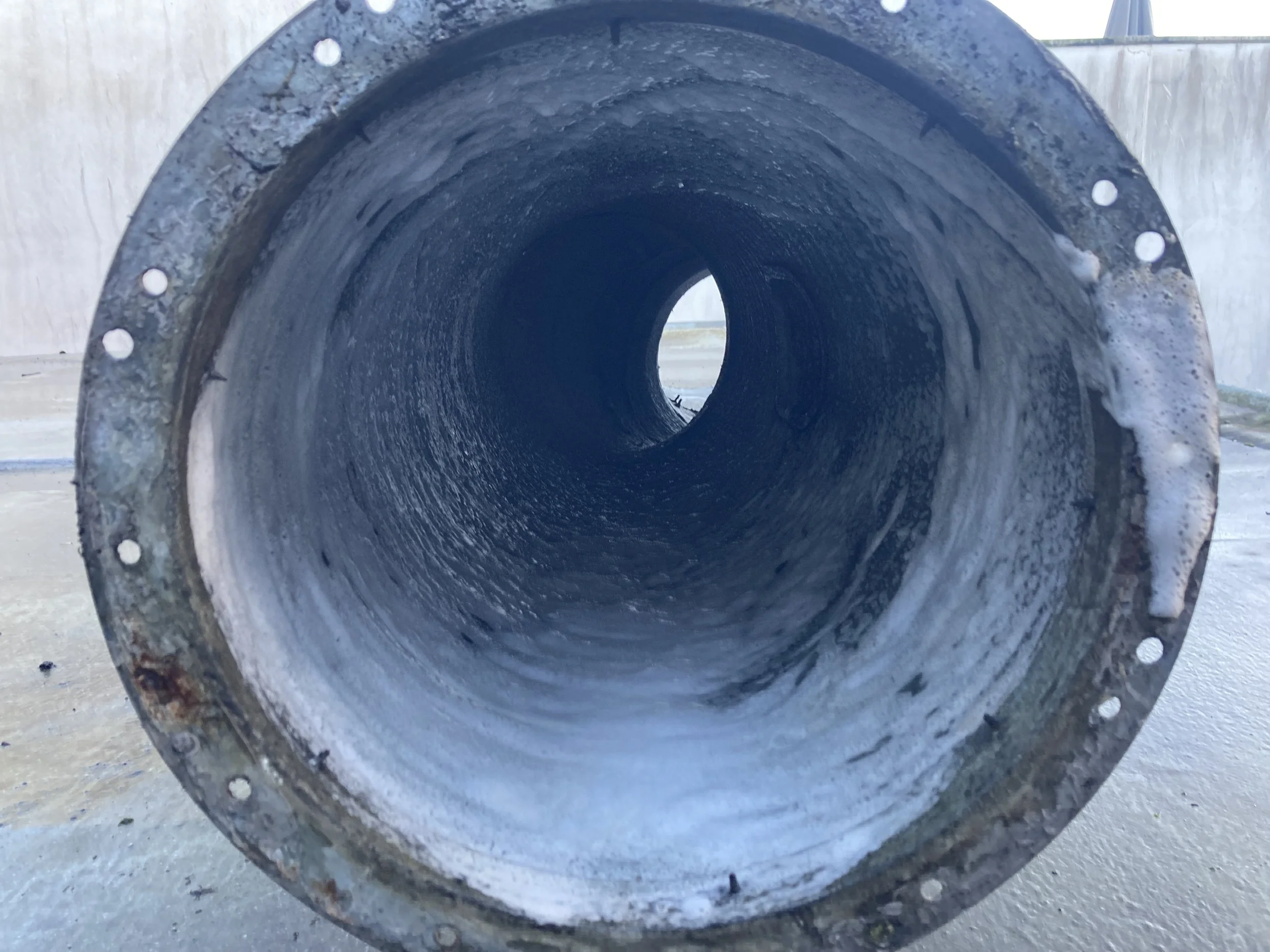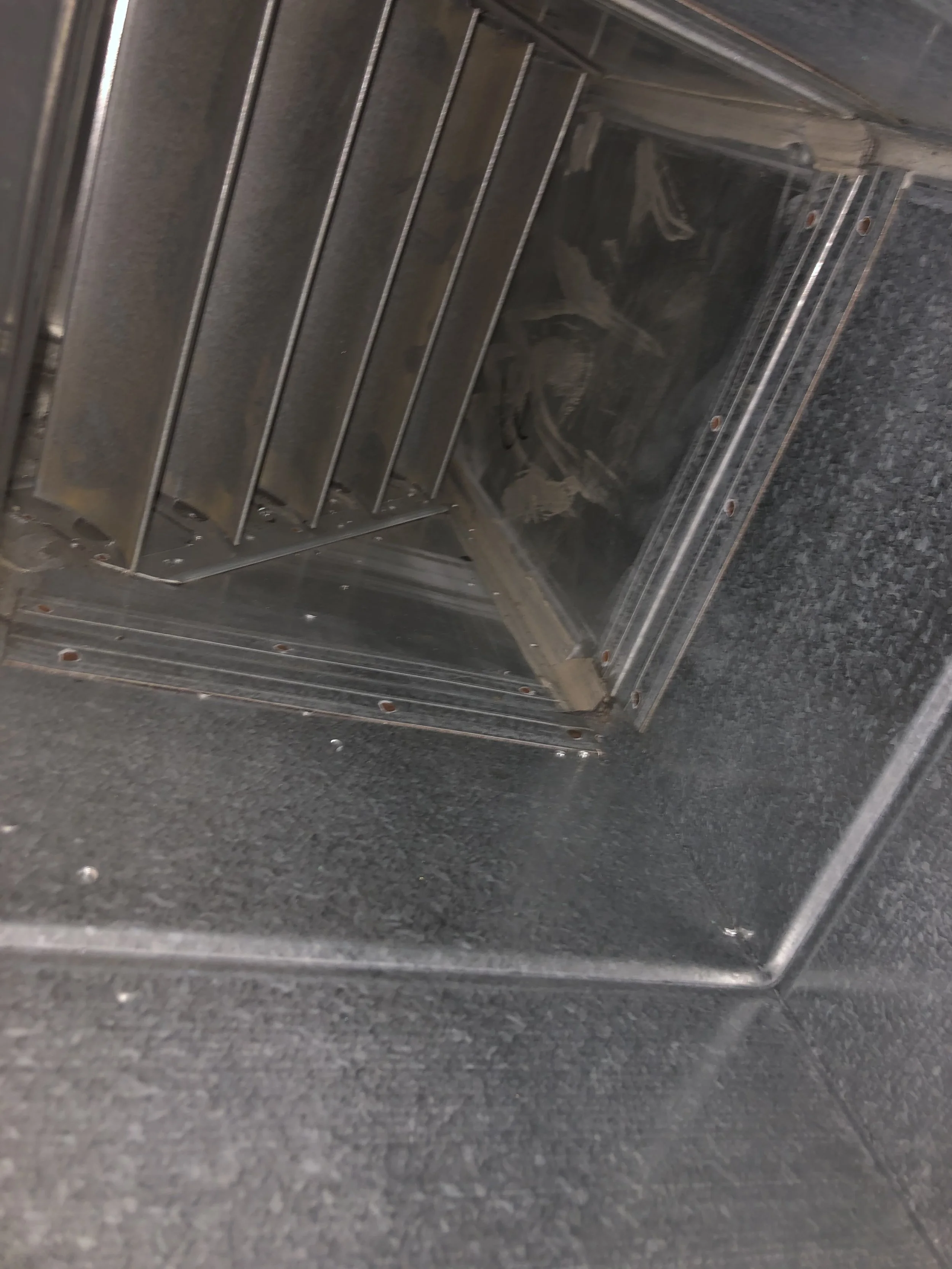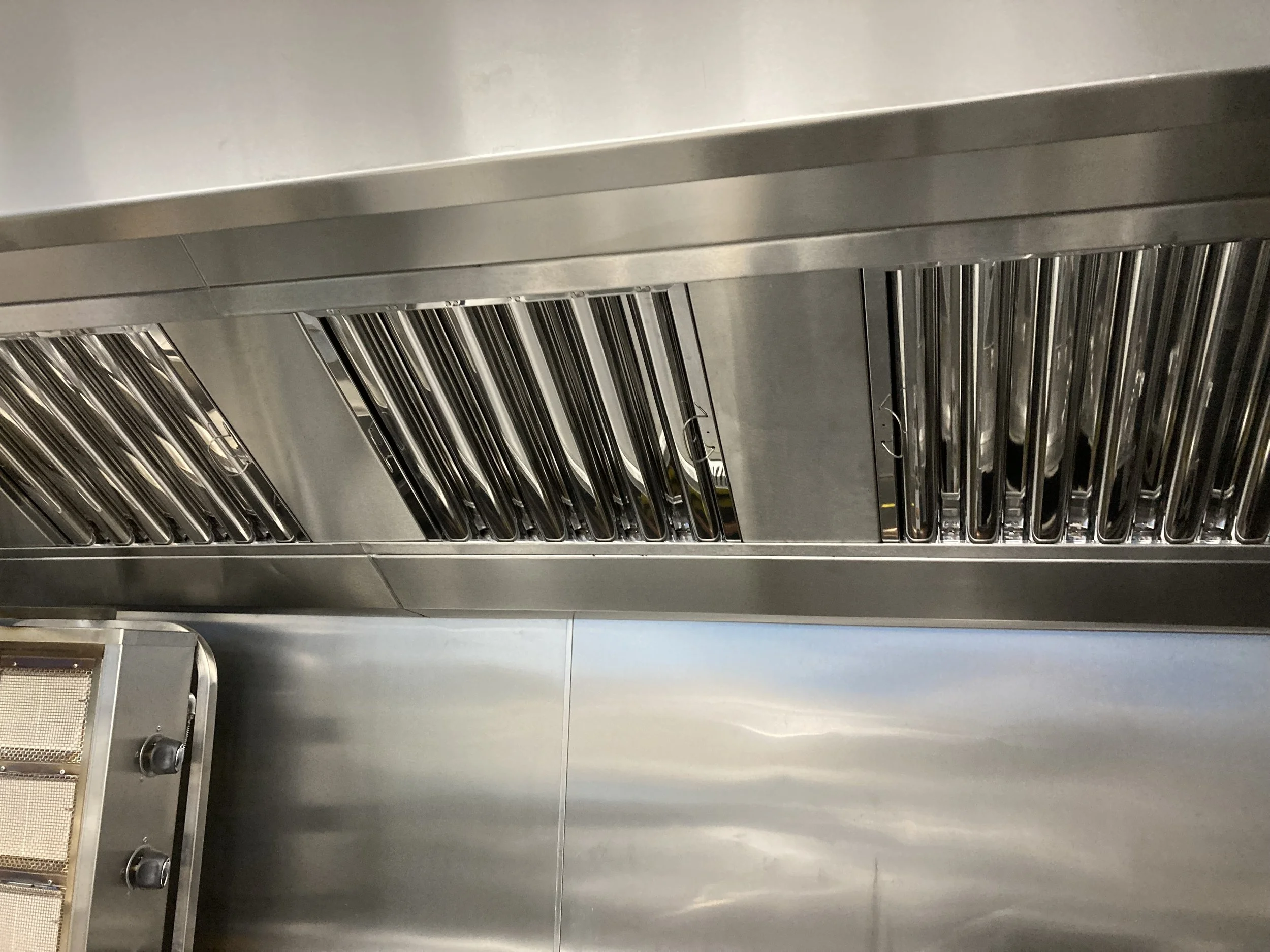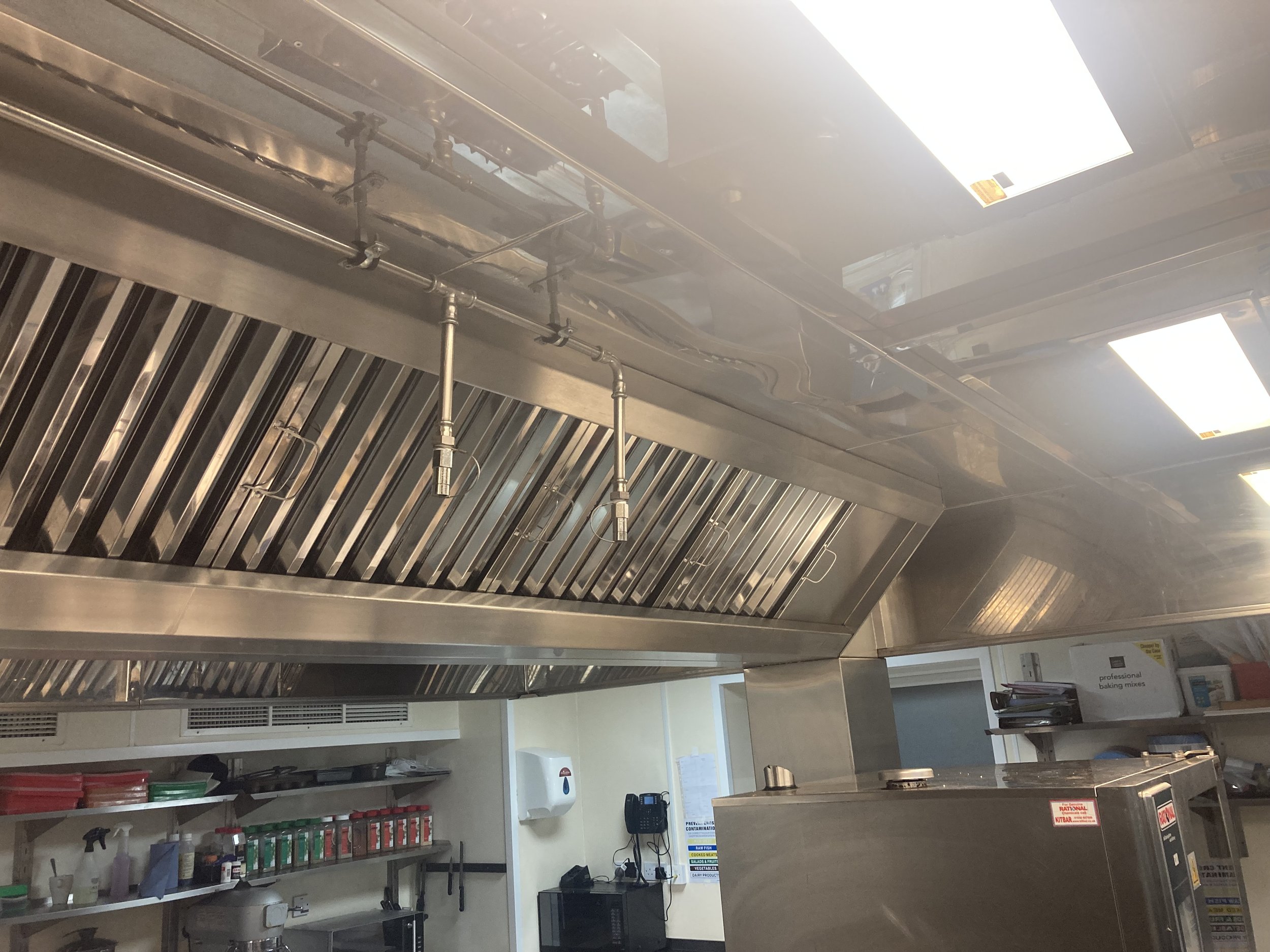
South Wales, Cardiff and Swansea
Ventilation, Clean, Safe and Compliant.
Ductwork cleaning is an essential service for maintaining a safe and efficient environment in both residential and commercial spaces. Over time, air ducts accumulate dust, debris, and contaminants, compromising air quality and reducing HVAC efficiency. Professional ductwork cleaning enhances indoor air quality and prolongs the lifespan of HVAC systems, leading to lower energy costs and improved performance.
At Safe Duct Ventilation Hygiene, our comprehensive ductwork cleaning services adhere to the strict guidelines established by TR-19 and BS EN15780, ensuring that you receive the highest standard of care. Our trained technicians utilise state-of-the-art equipment and proven techniques to thoroughly clean ducts, effectively removing all build-up of particulate matter and bio-contaminants.
We emphasise the importance of regular ductwork maintenance as a critical component of a comprehensive HVAC system assessment. By inspecting and cleaning your ductwork, we help mitigate potential fire hazards and ensure compliance with health and safety regulations. Our unwavering commitment to professionalism and customer satisfaction positions us as the ideal choice for effective and efficient ductwork cleaning.
Choose Safe Duct Ventilation Hygiene for your ductwork cleaning needs and ensure a healthier, more efficient environment.
Contact us today to learn more about our services and schedule an appointment. Professional kitchens are required to professionally clean their kitchen canopy, ductwork and fans. This is to prevent the risk of fire.
We work at times to suit your business needs, reducing down time and less interruption for your business.
Our Services
-

Canopy and Ductwork Cleaning
Canopy Cleaning Services
Canopy cleaning is an essential maintenance task that ensures the safety and efficiency of your kitchen ventilation system. At Safe Duct Ventilation Hygiene, we specialise in kitchen canopy and ductwork cleaning to the highest standards, adhering to TR-19 and BS EN15780 guidelines.
Importance of Canopy Cleaning
Grease buildup in kitchen canopies poses significant fire hazards and can lead to decreased airflow efficiency. Regular cleaning not only minimises fire risks but also enhances the longevity of your kitchen equipment. Our trained technicians utilise industry-standard techniques and eco-friendly cleaning agents to effectively remove grease, grime, and other contaminants.
Our Process
Inspection: We conduct a thorough assessment of the canopy and ventilation system to identify areas requiring special attention.
Preparation: Our team prepares the work area by covering adjacent surfaces and ensuring compliance with safety regulations.
Cleaning: Using specialised tools, we meticulously clean the canopy, exhaust fans, and ductwork, eliminating any build-up.
Final Inspection: A final walk through ensures that every section meets our strict cleanliness standards before we leave the site.
Benefits
Reduced Fire Risk: Regular cleaning helps to prevent grease ignitions.
Improved Air Quality: A clean canopy promotes better air circulation in your kitchen.
Compliance: Stay in line with health and safety regulations to avoid penalties.
Contact us today to schedule your kitchen canopy cleaning service and ensure a safer, more efficient kitchen environment.
-

Laundry Ductwork Cleaning
Laundry Ductwork Cleaning
Proper maintenance of laundry ductwork is essential for ensuring the efficient operation of your laundry equipment and maintaining a safe environment. Accumulation of lint, dust, and other debris in ductwork can lead to reduced airflow, increased energy consumption, and potential fire hazards. Regular cleaning of laundry ducts is crucial for the following reasons:
Improved Airflow and Efficiency
Over time, lint buildup in laundry ducts can significantly obstruct airflow. This can lead to longer drying times, increased energy costs, and potential wear on the dryer. Professional cleaning helps restore optimal airflow, enhancing the efficiency of your laundry system.
Fire Hazard Prevention
Lint is highly flammable, and when accumulated in ducts, it poses a serious fire risk. Annual inspections and cleanings help identify and remove hazardous lint buildup, reducing the risk of fire and ensuring compliance with safety regulations.
Odour Control
Accumulated debris in ductwork can lead to unpleasant odours, affecting the overall atmosphere of your laundry facility. Thorough cleaning helps eliminate these odours, creating a fresher environment for staff and clients alike.
Regulatory Compliance
Adhering to industry standards, such as TR-19 and BS EN15780, is essential for ensuring your laundry ventilation systems meet safety and efficiency requirements. Regular duct cleaning helps maintain compliance and can protect your business from potential liabilities.
Healthier Environment
Clogged ducts can lead to poor indoor air quality, impacting the health of employees and clients. Cleaning the ducts not only improves airflow but also reduces the presence of allergens and pollutants in the air.
Conclusion
Investing in professional laundry ductwork cleaning is vital for operational efficiency, safety, and health. By prioritising regular maintenance, you can ensure the longevity of your equipment, protect your facility from fire hazards, and maintain a healthy environment. Safe Duct Ventilation Hygiene is dedicated to providing comprehensive cleaning services tailored to meet industry standards, ensuring your laundry systems operate safely and efficiently.
-

HVAC Ductwork
HVAC cleaning is essential for maintaining indoor air quality, system efficiency and overall safety.
Compliance with industry standards such as BS EN 15780 and TR-19 is critical for ensuring that HVAC systems are thoroughly cleaned and maintained to the highest levels.
BS EN 15780 Standards
BS EN 15780 focuses on the cleanliness of the air handling systems, specifically addressing the design, installation, maintenance and operation of ventilation systems. The standard outlines requirements for cleanliness classification, cleaning methods, and frequency of cleaning. Adhering to these standards not only promotes healthier indoor environments but also reduces energy consumption and prolongs the lifespan of HVAC equipment.
TR-19 Standards
TR-19 is a prominent standard in the UK for ductwork cleaning. It provides detailed guidelines for cleaning ventilation ductwork and assessing its condition. This standard emphasises the importance of proper cleaning techniques, tools and inspection methods to ensure that systems are free from contaminants such as dust, grease, and biological pollutants. Implementing TR-19 practices helps prevent fire hazards and enhances the efficiency of HVAC systems.
Importance of Compliance
Maintaining compliance with both BS EN 15780 and TR-19 standards is essential for businesses that operate HVAC systems. Regular cleaning according to these guidelines ensures the effective removal of pollutants which can lead to improved air quality and reduced health risks for occupants. Furthermore, it helps organizations avoid potential penalties associated with non-compliance.
Conclusion
Investing in professional HVAC cleaning services that adhere to BS EN 15780 and TR-19 standards is a critical component of responsible maintenance. By prioritising these practices, organisations can enhance their operational efficiency, safeguard the health of occupants and ensure compliance with regulatory requirements.
-
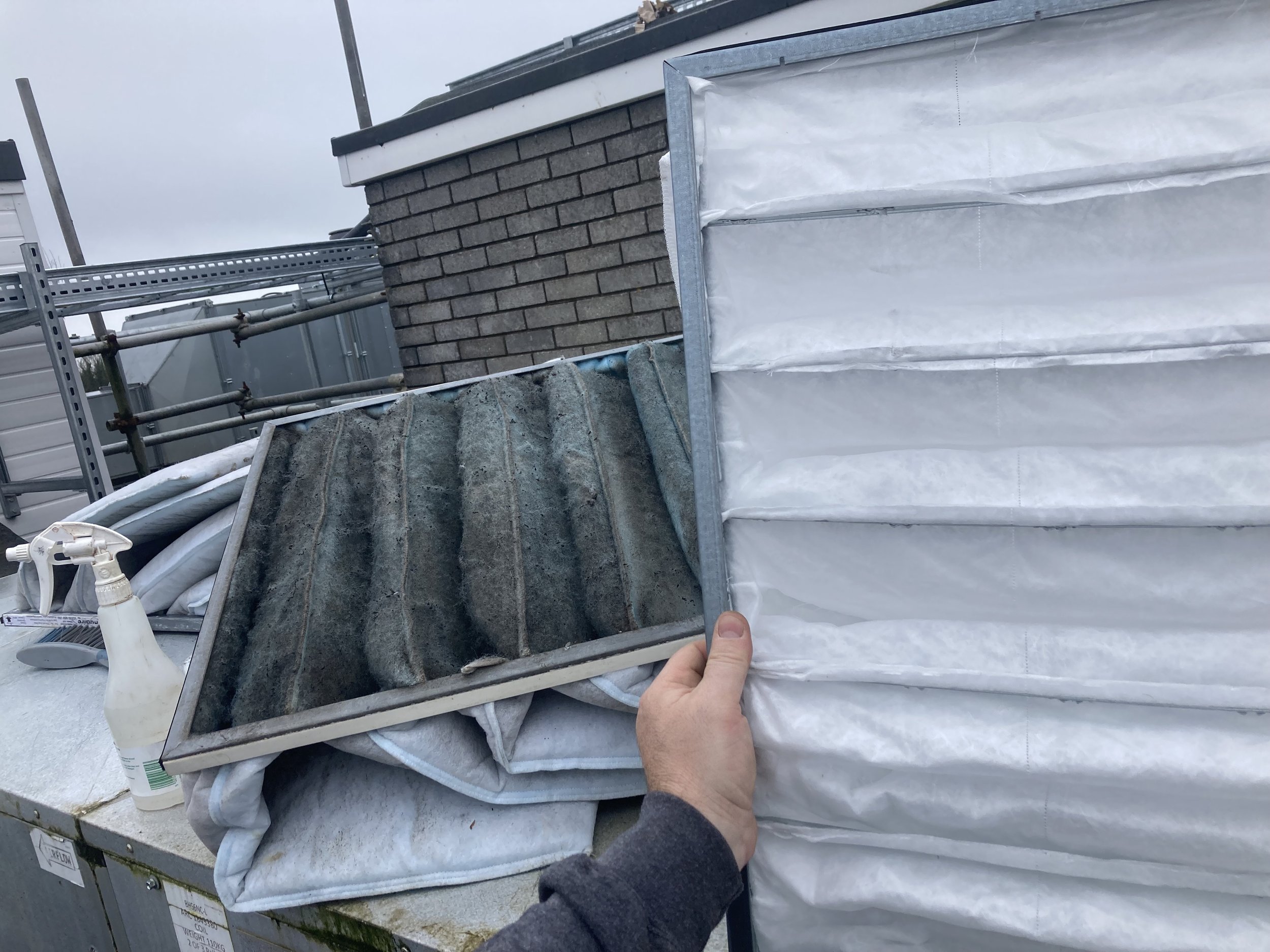
Air Handling Unit Servicing
AHU Servicing
Air Handling Units (AHUs) play a crucial role in maintaining indoor air quality and system efficiency. Regular servicing of AHUs is essential to ensure they operate optimally and sustain a healthy environment. The following outlines key aspects of AHU servicing:
Inspection
A thorough inspection of the AHU is the first step in the servicing process. Technicians should check for signs of wear and tear, including:
Ductwork Integrity: Inspect for leaks or blockages that can impede airflow.
Filters: Examine filters for dirt buildup that may restrict airflow and reduce efficiency.
Coils: Inspect cooling and heating coils for dirt accumulation, which can affect performance.
Cleaning
Regular cleaning of the AHU components is crucial. This includes:
Filters: Clean or replace filters regularly to maintain efficiency and improve indoor air quality.
Coils: Clean coils to ensure optimal heat exchange and prevent the buildup of contaminants.
Drains and Pans: Inspect and clear drains to prevent water accumulation and bacterial growth.
Maintenance
Following inspection and cleaning, maintenance tasks should be performed, including:
Lubrication: Apply lubricant to moving parts to minimize friction and reduce wear.
Belt and Motor Checks: Assess belts for wear, tension and alignment; ensure motors are well-maintained and functioning correctly.
Electrical Connections: Check and tighten electrical connections to prevent hazards and ensure reliable operation.
Safety Checks
Conduct fire damper inspections and safety tests to ensure all safety features are operational and compliant with regulations.
Documentation
After servicing is complete, it’s essential to document all findings, actions taken, and recommendations for future servicing. This record helps in maintaining compliance with industry standards and provides a history for ongoing maintenance.
Regular AHU servicing not only extends the lifespan of the equipment but also enhances the overall efficiency of the HVAC system, contributing to a healthier indoor environment. Prioritising professional servicing ensures that your AHU operates effectively and safely
-

Inspection, Testing and Recording
Grease Wet Film Thickness Test
The grease wet film thickness test is a crucial procedure in maintaining kitchen ventilation systems, particularly in establishments where cooking activities generate significant grease and smoke. This test assesses the coating thickness of grease that accumulates within ductwork and canopy hoods, ensuring compliance with industry standards such as TR-19 and BS EN15780.
Purpose
The primary purpose of the grease wet film thickness test is to evaluate whether the existing coating can effectively prevent grease buildup, which can pose serious fire hazards and impede air flow. Proper maintenance protocols dictate that surfaces should not only be cleaned but also assessed for adequate protective measures.
Procedure
Preparation: Ensure that the system is turned off and cooled down to a safe temperature before beginning the test. Gather necessary tools, including a wet film thickness gauge.
Sampling: Select specific areas within the ductwork and canopy hoods where grease accumulation is most likely. These areas should represent various sections of the ventilation system.
Measurement: Utilise the wet film thickness gauge to measure the thickness of the accumulated grease on these surfaces. Perform measurements at multiple points to ensure consistency and accuracy.
Documentation: Record all measurements, noting the specific locations and environmental conditions. This documentation serves as a baseline for future maintenance and inspections.
Analysis: Compare the results against established industry standards. If the measurements exceed acceptable levels, immediate action should be taken to perform a thorough cleaning and re-evaluate the protective coatings used in the system.
Importance of Regular Testing
Regular grease wet film thickness testing is essential for maintaining a safe and efficient kitchen ventilation system. Not only does it help in preventing potential fire hazards but it also ensures compliance with health and safety regulations. Frequent assessments can enhance the longevity of the system and improve air quality, contributing to a healthier environment for both staff and customers.
In conclusion, conducting grease wet film thickness tests is a vital component of kitchen ventilation hygiene. By adhering to standard practices and ensuring meticulous measurements, establishments can significantly reduce the risks associated with grease buildup.
-

Bacteria and Contamination Testing
Air Quality Testing
Ductwork bacteria pose significant health risks, as they can lead to various respiratory ailments and exacerbate existing health conditions. High levels of bacteria in ventilation systems can originate from inadequate cleaning and maintenance, resulting in the accumulation of dust and moisture. This environment becomes conducive for microbacterial growth, including harmful pathogens.
Regular ductwork cleaning is essential to mitigate these risks. Adhering to standards such as TR-19 and BS EN 15780 ensures that ventilation systems are properly maintained, reducing bacteria and dust levels to safe standards. By implementing effective cleaning practices, businesses can protect their employees and customers from the adverse health effects associated with contaminated air.
In addition to health risks, excessive bacteria and dust levels can also contribute to reduced HVAC efficiency, leading to increased energy costs. A thorough cleaning of kitchen canopies, laundry ventilation systems and fire dampers not only enhances air quality but also optimises system performance.
Investing in professional ductwork cleaning services, like those offered by Safe Duct Ventilation Hygiene, ensures compliance with health regulations while promoting a safer and healthier indoor environment. Regular inspection and maintenance of ventilation systems are crucial in preventing the proliferation of harmful bacteria and maintaining air quality.
On site Samples




